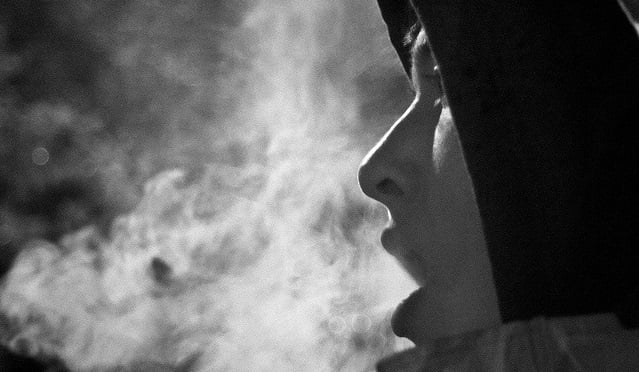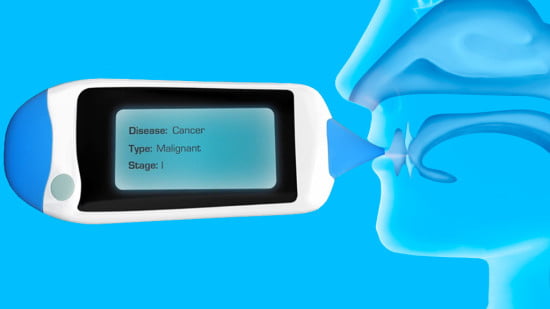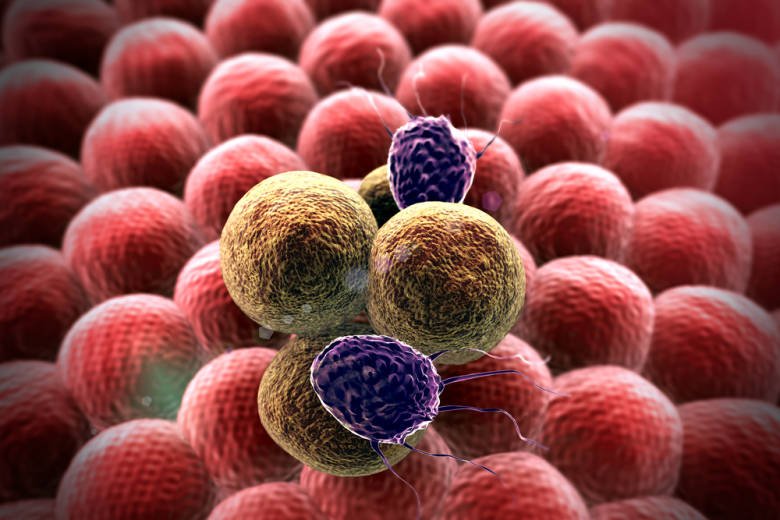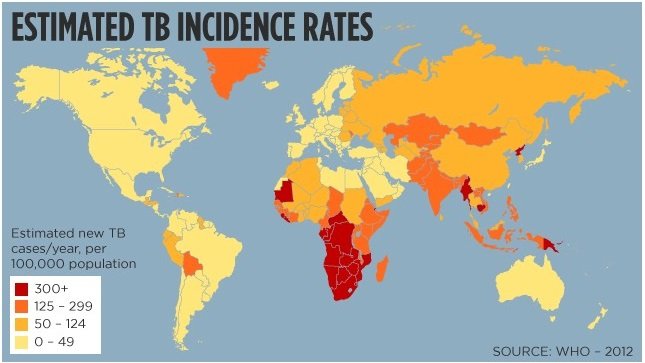Back in 400 B.C., before the invention of modern medicine, the Greek physician Hippocrates observed that a number of diseases could be detected on the breath. He noted that “fish-smelling” breath could usually be associated with liver disease and “urine smells” could be tied to kidney failure. Though Hippocrates was keen to observe a close connection between the breath and the inner-workings of the body, his assertions on our body’s subtle signs of disease have historically been overlooked by the medical community.
At least that was until Prof. Hossam Haick of Israel’s Technion came onto the scene. Building on Hippocrates’ vision, Haick has developed a device that can sense disease on the breath, much like a breathalyzer test. What he calls the SNIFFPHONE uses nanotechnology sensors to analyze the particles on the breath and is able to pinpoint exact diseases, like certain kinds of cancer, pulmonary and even the early stages of neurodegenerative diseases.
SEE ALSO: NaNose: The Breathalyzer Test That Sniffs Out Lung Cancer Before It Spreads
“There have been several works throughout history that have suggested that there is a connection between disease and the breath,” Haick tells NoCamels. “However, until this point, there was a lack of scientific evidence to prove that this is true,” he says of the novelty of his impressive body of research, which won him a $6.8 million grant from the European Commission, among other awards.
Haick is going beyond Hippocrates’ theories by inventing groundbreaking diagnostic technologies that promise to detect disease without ever drawing a drop of blood; a bold endeavor that has earned him a good deal of international attention and praise.
Sniffing out disease, one phone at a time
After Hippocrates’ theory on bad breath, or halitosis, as an indication of disease, there were a number of notable scientists before Haick came along who tried to prove what seems like a logical connection. One of them was Antoine Lavoisier, who in the 18th century conducted breath experiments on humans and animals to better understand how our respiratory systems work. Then, in 1971, the “father of molecular biology” Linus Pauling demonstrated for the first time that the human breath is a complex gas that contains more than 200 different volatile organic compounds that can be detected. Today, scientists know that there are about 1,000 different volatile chemicals on the human breath, a good deal of which have become the basis for Haick’s device.
Haick explains of the SNIFFPHONE, a mobile device containing his NaNose breathalyzer test that can sniff out cancer cells and other forms of disease, “We look for what are called volatile organic compounds, or biomarkers, on the breath. These biomarkers are chemical compounds that are imitated from the source of the disease and, as a result, are diffused within the blood stream. Of course, the blood stream is in contact with the skin and the lungs, which is why our test is able to detect them.”
Haick asserts that the NaNose method works with up to 90 percent accuracy, detecting both malignant and benign cancer tumors, as well as their source. This has been the bulk of Haick and his team’s research in the last few years, namely the exact and meticulous craft of identifying where the volatile biomarkers originate from in the body for a more precise diagnosis.
“After collecting about 3,000 samples from 16 different centers worldwide, one of our major findings was that, for every disease, there is a unique signature or ‘fingerprint’ that is expressed on the breath, and in some cases through the skin,” Haick notes, adding the impressive fact that, “one disease does not disrupt another.” This means that Haick’s NaNose technology, as applied in the mobile SNIFFPHONE, could be used by doctors or really anyone to detect not one, but multiple diseases they may have contracted or could be at risk for.
Currently, over twenty diseases can be detected using the NaNose system, working “just as I dreamed it would,” according to Haick. A number of deadly cancers including lung, colorectal, gastric, kidney, breast, prostate and liver cancer can be effectively diagnosed on the breath, as well as the early stages of neurodegenerative diseases like Parkinson’s, Multiple Sclerosis and Alzheimer’s. Haick notes that the team has also successfully explored using the device to detect pulmonary diseases such as hypertension and asthma, and internal diseases like irritable bowel syndrome.
Sign up for our free weekly newsletter
SubscribeA game-changing TB test
As with any man on a mission, SNIFFPHONE’s impressive capabilities were not sufficient for Haick. Recently his Technion lab revealed that they are in the advanced stages of developing a skin patch that can detect one of the world’s deadliest killers – tuberculosis (TB). According to Haick, the patch is able to identify certain “markers” on the skin, such as elasticity and collagen quality that can be associated with TB and its early symptoms. Haick notably received a $ 1 million Grand Challenges Explorations grant from the Bill & Melinda Gates Foundation to continue developing the patch into its final stages.
SEE ALSO: 10 Israeli Companies At The Cutting Edge Of Life-Saving Tech
According to the World Health Organization, one third of the world’s population is infected with TB and about one and a half million people die from the disease each year. So when Haick set out to create an accessible, simple and inexpensive diagnostic method that can control the spread of TB, the Gates Foundation paid note.
“The major issue is that the current tools available in developing countries are quite expensive and require training and previous knowledge to be used. Some people need to wait two weeks and up to a year to be diagnosed with the disease, while the same process happens in a matter of minutes in the developed world. This is because many of them are impoverished, and they cannot afford the $70 diagnostic tool,” says Haick.
Haick hopes that his “Self-Administered Adhesive Plaster for Detection of Tuberculosis” will cost no more than $1 and will become available to anyone in need of diagnosis. The patch will be applied to the patient’s chest, and following a waiting period of two to five minutes, the patch will either turn green to indicate the patient is healthy or red to show that TB is detected. The simplicity of the method makes it possible for patients to “self-diagnose” at home, and for the consistent monitoring of at-risk individuals, such as TB-carriers, smokers and HIV-carriers, without the need to travel and pay for the test at a clinic. In the second phase of the grant, and as Haick and his team finalize the prototype, they hope to begin field-testing the patch in South Africa, India and China.
Humbly Haick
Haick’s prodigal background is no less impressive than the promise of his research. At only forty years-old, the native of Nazareth, Israel, has received his bachelors in Chemical Engineering from Ben Gurion University, PhD from the Technion in a fast-track program, worked as a research assistant at the Weizmann Institute, received Post Doctorate from CalTech and is the fasted promoted professor in the history of the Technion, where his lab is located today. In addition, he is a Knight of the Order of Academic Palms in France, was listed as one of the “World’s Top 35 Young Scientists” and is the recipient of the “Innovation and Entrepreneurship” prize in chemical engineering, among many other recognitions. Still, despite his impressive resume and slew of grants and accreditations, Haick remains humbly tied to his goal of making healthcare accessible and affordable for people all over the world.
“Ultimately, we hope these advances could contribute to the democratization of health globally,” Haick said.
Photos: Technion/ CNN
Related posts

Israeli Medical Technologies That Could Change The World

Harnessing Our Own Bodies For Side Effect-Free Weight Loss

Missing Protein Could Unlock Treatment For Aggressive Lung Cancer








Facebook comments